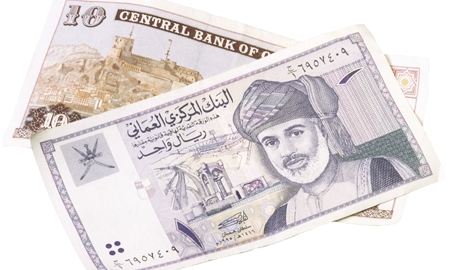Owing to its location, Oman has long attracted trade and investment to its shores. This first came in the form of merchant ships docking in Muscat. Today, steady growth and an open and accessible economy attract a range of foreign investors.
Oman ranked 32nd in the 2011/12 World Economic Forum’s Global Competitiveness Index, while GDP grew by 5.5% in 2011 (CIA World Factbook figures). Income from oil helped the country to invest in infrastructure, while its position outside of OPEC – and the fact that much of its energy exports go to Asia – helped buffer Oman from Euro Zone problems.
Relaxed foreign investor regulations, a developed financial sector and the rial’s pegging to the US dollar have also boosted investment, as
Hamood Sangour Al Zadjali, executive president of the Central Bank of Oman, explained.
Bank profits in oman have been on the rise since 2009, in spite of the turbulent global financial times
--------------------------------------------
Existing commercial banks operating in Oman can open windows for the purpose of Islamic banking.
Hamood Sangour Al Zadjali, Executive President of Central Bank
--------------------------------------------
Oman’s stable economic performance has seen it ranked as the world’s 32nd most competitive country.
Darwish Ismail Al Balushi, Minister Responsible for Financial Affairs |
“Oman has emerged as an attractive destination for foreign direct investment due to its free market system, stable macroeconomic environment and political stability,” he said. “The future of Oman’s banking system remains promising with international rating agencies affirming and upgrading its sovereign rating.”
Inflationary pressures are also expected to weaken, partly due to the strengthening US dollar, allowing the Sultanate’s Eighth Five Year Plan to target growth areas.
“The 2012 budget provides for the highest single year spending of $26 billion,” said
Darwish Ismail Al Balushi, Minister Responsible for Financial Affairs. “That’s an increase of 23% against the original 2011 budget with focus on job creation, human resources development, and infrastructure spending.”
“It is designed to speed the pace of economic diversification and further promote the role of the private sector in the development process,” added Al Zadjali. “The government also plans to enhance the existing co-ordination between fiscal and monetary policy.”
These plans have already seen improvements across the country’s financial industries. Despite a struggling global economy, Oman’s banking sector profits amounted to RO190.8 million ($495.5 million) in 2009 and RO247.7 million in 2010. A study by the Boston Consulting Group shows that bank profits rose a further 2% in 2011.
“The Oman banks’ solid capitalisation, funding bases and high liquidity buffers and low levels of non-performing loans are ascribed as the basis of Omani banking sector stable and promising outlook,” said Al Balushi.
A new avenue of potential lies in Islamic financing, with two banks approved but yet to commence operations. Some proposals forecast 15-25% market share in the medium term.
Oman is also improving the performance of its stock market operations. Indexes suffered over the past year, but the Sultanate hopes engaging with local high net worth individuals – and technology, including the recently installed NFCV 900 system – will help the market grow.
“In the region we are seeing good indications,” said
Ahmed Saleh Al Marhoon, director general of Muscat Securities Market. “This means confidence is returning to the exchanges and people will begin to invest more.”
Oman has also focused on its insurance sector. The Capital Market Awareness Campaign 2011 toured the Sultanate to drive awareness of mitigating risk. Tied in with Oman’s improving banking and stock market operations – and their enviable GDP growth and geographical location – the Sultanate seems well placed to make the most of its burgeoning economy.
“Oman has made considerable investments in the USA ranging from strategic and trade imports to our sovereign wealth funds investments,” Al Balushi said. “And we will continue with the political reforms and encourage all elements to get engaged in defining the economic prosperity road map."

0 COMMENTS